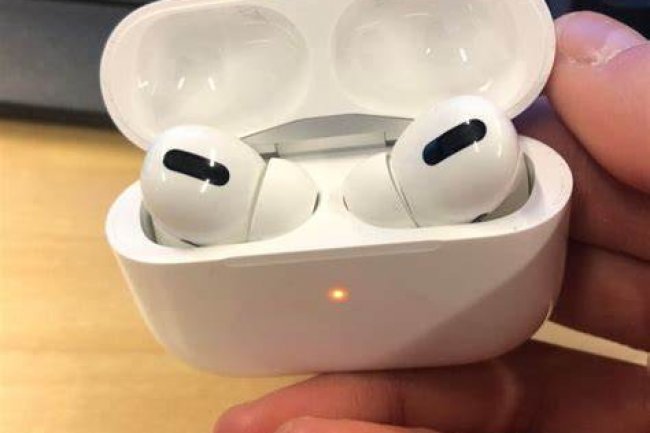i100 TWS 2022 V32

I'm not a sound expert, but the fake AirPods don't sound anything like the genuine article. They have a little fuzzy sound to them, which is the aural equivalent of having cloudy eyesight. They have a cheap tone to them. There's almost certainly a good explanation for this (something along the lines of "there's a restricted treble and base range"), but it's debatable whether or not it's significant. Fake AirPods are intended to resemble AirPods in appearance only, and not necessarily in sound.
AirPods clones made by i9S TWS.
FAKING AIRPODS IN THE I9S TWS IMAGES. THESE FAKE AIRPODS WERE SUPPLIED WITH A GUMMY CASE AROUND THE CHARGING CABLE.
Apple understands that the aesthetic of the AirPods is more important in terms of promoting the product than the sound quality it produces. The sound quality of the AirPods isn't addressed until the second-to-last phrase of Apple's advertising film for the product. ("As a side note, the new wireless AirPods provide great sound.") When it comes to audio quality, AirPods may often be classified as "good," but not as "excellent." But that doesn't matter since the fact that Apple's AirPods are wireless is at the heart of the company's marketing campaign.
AirPods are known for having an odd design, with early AirPod reviews describing the device as "dorky" and "controversial" in terms of aesthetics. However, each of the fake AirPods is precisely recreated to match the look of the genuine AirPods.
In addition, Apple's AirPods are not the most costly earbuds available, which means that the jokes about AirPod users being "rich" aren't entirely accurate. AirPods, on the other hand, continue to be a sign of affluence.

AirPods, like almost every electronic device, are constructed using labor sourced from mines, refineries, and assembly facilities—labor that is often conducted by low-wage employees from a variety of non-Western nations. Every day, tens of thousands of low-wage employees, dispersed all over the globe, are subjected to the whims of what capitalists refer to as "the invisible hand of the market." That is, if there is a need for a product or service, these individuals are able to find employment. When there isn't a demand, they don't make anything.

Apple does not make a big deal about labor abuses at the facilities that assist in the production of its goods since doing so would damage the "magic" of the company. Products are meant to "simply work" when they are taken out of their clean white package. However, all items, even Apple products, depend on the sweat and labor of human people to be created. These things would not be possible to manufacture without the exploitation of low-wage workers.

As a result, AirPods are able to reflect "coolness" and luxury to their users. They derive their value from the effort that Apple want to remain unseen by the public.
Fake AirPods Have a Social Life of Their Own
When compared to actual AirPods, fake AirPods are constructed from an entirely different culture. Similarly, if Apple AirPods are basically Apple goods, then the counterfeit AirPods are inherently Shenzhen products, having sprung from the city's Shanzhai community of counterfeit electronic manufacturers.

According to Sarah Emerson in a 2018 feature piece for Motherboard, Shenzhen's robust counterfeit sector is made feasible in large part by the city's burgeoning "maker" movement, which is summarized as follows:
Makers, in the widest sense, are technological tinkerers: individuals preoccupied with hardware, tools, and shared knowledge who take pleasure in their DIY ethos, according to the author.
Though Shanzhai residents may design imitation AirPods, they are not manufactured one-by-one by DIY technologists working in Shenzhen's federally-funded "maker spaces," as some have claimed. They're constructed in assembly facilities like to those used by companies such as Apple. All of them are headquartered in Shenzhen, according to the facility profiles for the items that can be found on Alibaba, a Chinese wholesale shopping website, which may be searched for. Fluorescent lighting with a green tint is used to illuminate the facilities. These goods are cut, soldered, wound, inspected, tested, and packaged by workers. It is a skill-based occupation that is frequently underpaid.
What's Your Reaction?
















